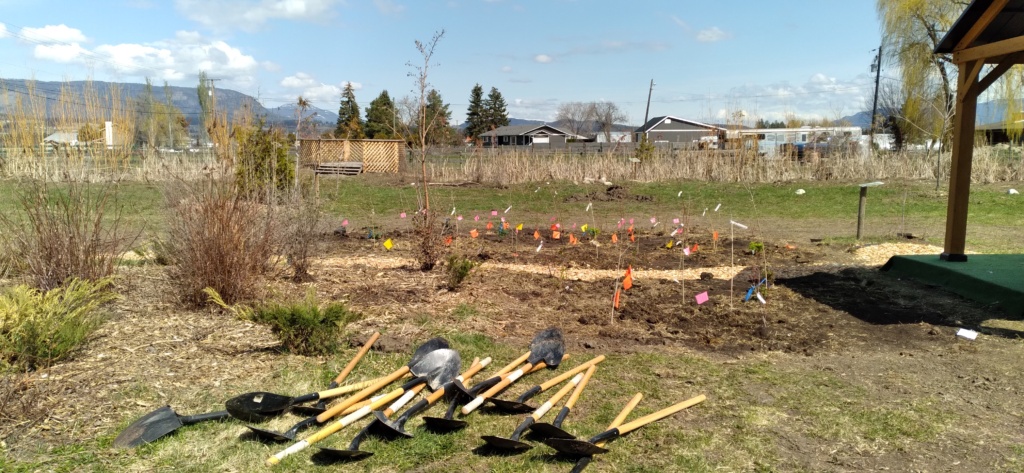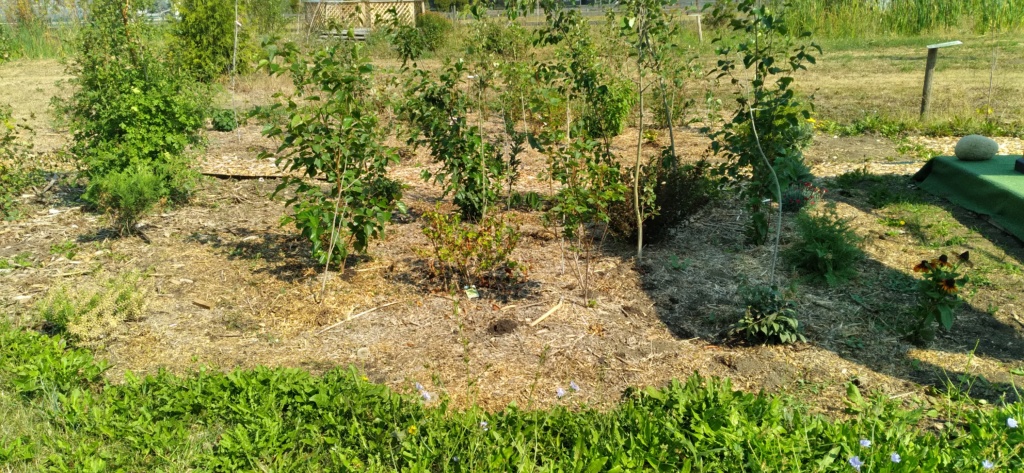BCSWA are excited that the two mini forests planted on Earth Day 2023 grew very rapidly between May and October, demonstrating that the Miyawaki method is effective.


In 2024 we will plant two new mini forests at Pleasant Valley Wetland Heritage Park as well as offer trees and mini forest installations to organizations in the Shuswap and north Okanagan.
The Miyawaki Method is unique in that it re-creates the conditions for a mature natural forest to arise within decades rather than centuries.

Planting a mini forest according to the Miyawaki Method ensures that the forest will be the best fit for its environment – more stable, more resistant to stress, and ultimately more successful.
Making a Mini-Forest: The Basics
BCSWA will be laying the groundwork at the end of March for planting the trees. Rejuvenating the soil is the critical first step—the goal is to simulate the living soil of a healthy, mature forest. This happens naturally during the stages of ecological succession, but because the Miyawaki Method skips immediately to the climax stage, some preparation is required to compensate.
We arrange pioneer species trees and shrubs randomly in a marked grid to simulate growth in a natural forest. Planting density is a signature of the Miyawaki Method. Conventional wisdom says that plants compete for light, water, and soil nutrients; therefore, plants should have lots of space between them to reduce that competition. But it’s not how a Miyawaki forest works. For a Miyawaki forest, the standard planting density is three plants per square meter. This density helps achieve the goal of ecosystem regeneration. After all, in a natural forest, plants are not evenly and widely spaced. Dense planting stimulates mutualistic and competitive interactions among the plants and facilitates connections with soil microorganisms. It also promotes virtuous competition for sunlight, hastening upward growth.
Mulching is a critical component of the Miyawaki Method. After planting, the ground will be covered with a thick mulch similar to fallen leaves on a forest floor. Once the young trees have had a chance to mature, they will contribute leaf mulch to the forest floor naturally. Mulch protects the bare soil from water loss by evaporation, from erosion, and from temperature extremes. Mulch also suppresses weed growth and eventually decomposes into the soil, enriching it.
As they become established over the first few years, the plantings typically need occasional watering and weeding, but after three years the young forest patches are developed enough to shade out weeds and shelter the soil. They are then generally self-sufficient and need no maintenance of any sort—no pruning, no watering, no fertilizing, no pest control—ever.
![]()
